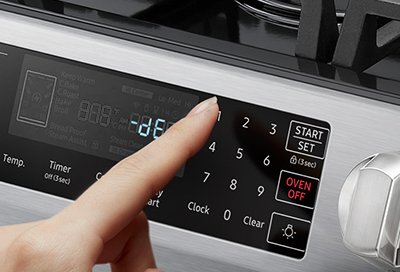
So, what’s the deal with this F1 error code? In simple terms, it’s your appliance’s way of saying something’s not quite right. It’s like the “check engine” light on your car – a signal that requires your attention. While this error can be annoying, understanding it doesn’t have to be as complicated as learning rocket science. Often, it can be linked to electronic failures within the oven or range, usually related to the touch pad or control board. Now, let’s dive deeper into how resetting might actually fix the issue and save your dinner plans.
What Is the F1 Error Code?
The F1 error code on your Samsung oven or range is a common signal indicating a problem with the electronic components. Think of it like when your computer freezes – the screen locks up until you reboot it. Similarly, the F1 code is often associated with a fault in the touch pad or control board, which can result from several factors like power surges, moisture, or even just a random glitch. This error is the oven’s way of asking for a little help to get back on track.
You might be wondering, why does this happen? Well, electronic devices can be a bit sensitive. The touch pad and the control board in your oven are crucial components. They’re like the brain and nervous system, respectively, of your appliance. If the brain (touch pad) or the nerves (control board) malfunction, the whole system can get thrown off balance, resulting in an error code like F1.
Now, is this something to panic about? Absolutely not! Just like when your phone acts up and a simple restart fixes the issue, resetting your oven can sometimes clear the F1 error. But, before you rush to restart, there’s more to understand about how effective this method can be.
How to Reset Your Samsung Oven
Here’s the thing: resetting your Samsung oven is like giving it a fresh start. It’s quite similar to rebooting your phone or computer when they start acting funky. But how exactly do you reset an oven? It’s easier than you might think. First, locate the power source for your oven – which might be a plug or a circuit breaker, depending on your setup.
Once you’ve found it, unplug the oven or switch off the circuit breaker. Consider this step like removing the battery from an old-school phone; it’s a complete shutdown. Leave it off for about five minutes. This pause allows any lingering electrical charges to dissipate, which is crucial for a clean slate reset. Afterward, plug the oven back in or flip the breaker back on, and voila! Your oven should reboot.
Remember, this is often just a temporary fix. It’s like applying a band-aid on a small cut – it helps, but it doesn’t solve the root problem permanently. If the F1 error persists after you reset, it might be time to delve into other troubleshooting steps or consult a professional.
When Resetting Isn’t Enough
Okay, so you’ve tried resetting, but the F1 error stubbornly reappears. What gives? Unfortunately, this can happen if the underlying issue is more than just a temporary glitch. It’s like when you keep turning your Wi-Fi router on and off, but the internet still doesn’t work because there’s an issue with your service provider. At this point, you may need to dig deeper.
Persistent F1 errors can point towards more serious electronic malfunctions. It might be a faulty touch pad or a defective control board needing replacement. If resetting doesn’t do the trick, examining these components might be the next logical step. This can be a bit technical, requiring either electronic know-how or a professional technician’s assistance.
Sometimes, addressing environmental factors can help too. Avoid letting moisture, such as from cooking steam, enter control panel areas. Keeping the oven area well-ventilated might prevent future issues. If all else fails, contacting Samsung support for guidance or repair services is a viable option. They have the technical expertise to properly diagnose and fix the problem.
Preventing Future Error Codes
Prevention is always better than cure, right? While not every error can be foreseen, taking certain precautions can save you from unnecessary hassles. Start by ensuring your oven’s power supply is stable. Use a surge protector to guard against electrical spikes that could fry your electronics. This is like wearing sunscreen – it’s a preventive measure that safeguards against potential damage.
Regular cleaning is another proactive step. Gently clean the control panel and touch pad with a dry or slightly damp cloth – avoid water seeps which can trigger errors. It’s akin to cleaning a computer keyboard; you’ve got to be gentle to prevent damage to sensitive areas. Also, ensure proper ventilation around your oven to keep electronic components cool and avoid overheating.
Lastly, stay informed about your appliance. Reading the user manual might seem old school, but it can provide valuable tips specific to your model. This bit of knowledge helps you understand your oven better and might come in handy the next time an issue arises.
In conclusion, resetting your Samsung oven might be a quick fix for the F1 error, much like turning a device on and off again. However, it’s not always a permanent solution. Understanding when to reset and when to seek further help is crucial. By taking preventive measures and being aware of potential issues, you can keep your oven running smoothly and avoid future disruptions to your culinary adventures.